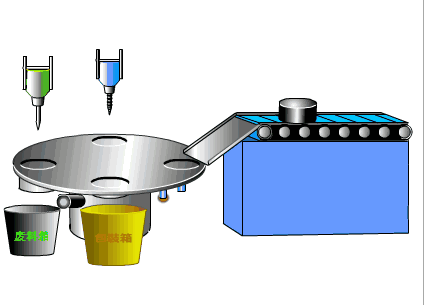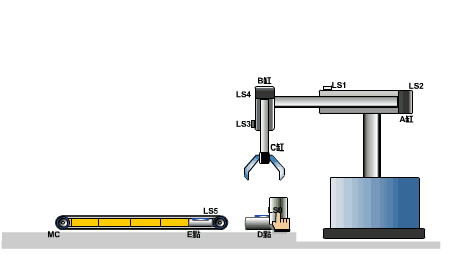
Anyone engaged in electrical work knows that the automation control provided by PLCs is indispensable for industrial production and technological development. Broadly speaking, a PLC can be understood as a centralized relay extension control cabinet. In practical production applications, PLCs significantly reduce the costs of industrial control and enhance centralized management and automatic control of equipment. To master PLCs, a solid foundation in PLC basics is essential.


1. From the composition of the PLC, besides the CPU, memory, and communication interfaces, what other interfaces are directly related to the industrial site? Please explain their main functions.
(1) Input Interface: Accepts signals from controlled devices and drives the internal circuit to connect or disconnect through optocouplers and input circuits.
(2) Output Interface: The execution results of the program are output through the optocouplers and output components (relays, thyristors, transistors) of the output interface, controlling the connection or disconnection of external loads.

2. What are the basic units of a PLC composed of? What is the function of each part?
(1) CPU: The core component of the PLC, directing the PLC to perform various tasks such as accepting user programs and data, diagnostics, and executing programs;
(2) Memory: Stores the system and user programs and data;
(3) I/O Interface: The connecting component between the PLC and the controlled objects in the industrial production site, used to accept signals from controlled devices and output the execution results of the program;
(4) Communication Interface: Facilitates information exchange with other devices such as monitors and printers through the communication interface;
(5) Power Supply.


3. What types of PLC digital output interfaces are there? What are their characteristics?
Thyristor Output Type: Generally can only carry AC loads, with fast response speed and high action frequency;
Transistor Output Type: Generally can only carry DC loads, with fast response speed and high action frequency;
Relay Output Type: Generally can carry both AC and DC loads, but has a longer response time and lower action frequency.

4. What types of PLCs are there based on structural form? What are their characteristics?
(1) Integrated Type: The CPU, power supply, and I/O components are all concentrated in one chassis, compact in structure and low in price, generally used for small PLCs;
(2) Modular Type: Divides the PLC into several separate modules, allowing for flexible configuration and easy expansion and maintenance, generally used for medium and large PLCs. Modular PLCs consist of a frame or baseboard and various modules, with modules installed in sockets on the frame or baseboard.
(3) Stacked Type: Combines the characteristics of both integrated and modular types, where the CPU, power supply, and I/O interfaces are also independent modules connected by cables, making the system both flexible in configuration and compact in size.

5. What is the PLC scanning cycle? What factors mainly affect it?
The PLC scanning process includes five stages: internal processing, communication service, input processing, program execution, and output processing. The time required to scan through these five stages once is called the scanning cycle.
The scanning cycle is related to the CPU operating speed, PLC hardware configuration, and the length of the user program.

6. How does the PLC execute user programs? What stages are included in the user program execution process?
The PLC executes user programs using a cyclic scanning method. The execution process of the user program includes the input sampling stage, program execution stage, and output refresh stage.


7. What advantages does a PLC control system have over a relay control system?
(1) Control Method: PLCs implement control through programming, making it easy to change or add control requirements, and PLC contacts are virtually unlimited;
(2) Operating Mode: PLCs use a serial working mode, enhancing the system’s anti-interference capability;
(3) Control Speed: The contacts in a PLC are essentially triggers, with instruction execution times in the microsecond range;
(4) Timing and Counting: PLCs use semiconductor integrated circuits as timers, with clock pulses provided by crystal oscillators, offering high precision and a wide range. PLCs have counting functions that relay systems do not possess;
(5) Reliability and Maintainability: PLCs utilize microelectronic technology, ensuring high reliability, and their self-diagnostic functions can promptly identify issues.

8. Why does a PLC exhibit output response lag? How can I/O response speed be improved?
Because PLCs use a centralized sampling and centralized output cyclic scanning working method, the state of the input can only be read during the input sampling stage of each scanning cycle, while the execution results of the program are only sent out during the output refresh stage. Additionally, the input and output delays of the PLC and the length of the user program can also cause output response lag.
To improve I/O response speed, methods such as direct input sampling, output refresh, interrupt input/output, and intelligent I/O interfaces can be employed.

9. What types of internal soft relays are there in Siemens series PLCs?
Input relays, output relays, auxiliary relays, status registers, timers, counters, data registers.

10. How to choose a PLC?
1) Model Selection: Consider structural form, installation method, functional requirements, response speed, reliability requirements, and model uniformity;
2) Capacity Selection: Consider the number of I/O points and user storage capacity;
3) I/O Module Selection: Includes selection of digital and analog I/O modules, as well as special function modules;
4) Selection of power supply modules and programming devices, among other equipment.

11. Briefly describe the characteristics of the centralized sampling and centralized output working method of PLCs. What are the advantages and disadvantages of using this working method?
Centralized Sampling: In one scanning cycle, input state sampling occurs only during the input sampling stage, and the input end will be blocked during the program execution stage.
Centralized Output: In one scanning cycle, the output state is only transferred from the output image register to the output latch during the output refresh stage, refreshing the output interface, while the output state remains in the output image register during other stages. This working method can enhance the system’s anti-interference capability and reliability, but it may cause lag in PLC input/output response.

12. What working method does the PLC adopt? What are its characteristics?
The PLC adopts a centralized sampling, centralized output, and cyclic scanning working method.
Characteristics: Centralized sampling means that in one scanning cycle, the PLC samples the input state only during the input sampling stage, and the input end will be blocked during the program execution stage.
Centralized output means that in one scanning cycle, the PLC only transfers the output-related states from the output image register to the output latch during the output refresh stage, refreshing the output interface, while the output state remains in the output image register during other stages.
Cyclic scanning means that the PLC needs to perform multiple operations within one scanning cycle, executing them sequentially in a time-sharing manner, repeatedly running in cycles.

13. What are the main components of an electromagnetic contactor? Briefly describe the working principle of an electromagnetic contactor.
An electromagnetic contactor generally consists of an electromagnetic mechanism, contacts, an arc extinguishing device, a release spring mechanism, a bracket, and a base. The contactor operates based on electromagnetic principles: when the electromagnetic coil is energized, the coil current generates a magnetic field, causing the static iron core to produce electromagnetic attraction, which drives the contacts to operate, opening the normally closed contacts and closing the normally open contacts, which are interlinked. When the coil is de-energized, the electromagnetic force disappears, and the armature falls back under the action of the release spring, restoring the contacts, i.e., the normally open contacts open and the normally closed contacts close.

14. Briefly describe the definition of a Programmable Logic Controller (PLC).
A Programmable Logic Controller (PLC) is an electronic device designed for digital operation in industrial environments. It uses programmable memory to store instructions for executing logical operations, sequential operations, timing, counting, and arithmetic operations, and can control various types of machinery or production processes through digital or analog inputs and outputs.
PLCs and their related peripheral devices should be designed to easily integrate into an industrial control system and facilitate functional expansion.

15. Briefly explain the differences in working principles between PLC systems and relay contactor systems.
The components are different;
The number of contacts is different;
The methods of implementing control are different.
Source: This article is reproduced from the internet, and the copyright belongs to the original author. If there are any copyright issues, please contact us promptly for removal. Thank you!

Scan to Follow
WeChat ID|13615417996
Follow the QR code on the left to get free access
[Siemens Data Collection]